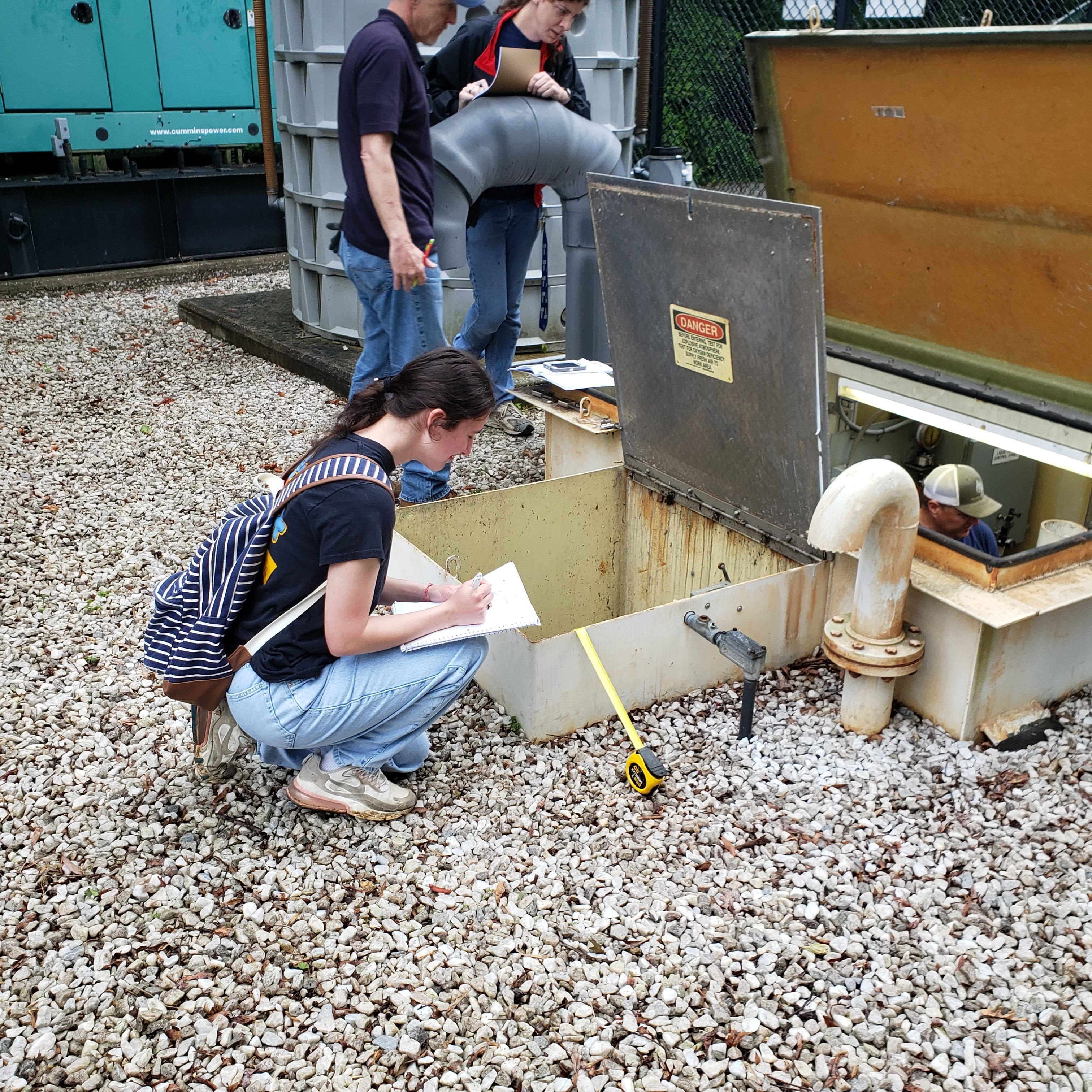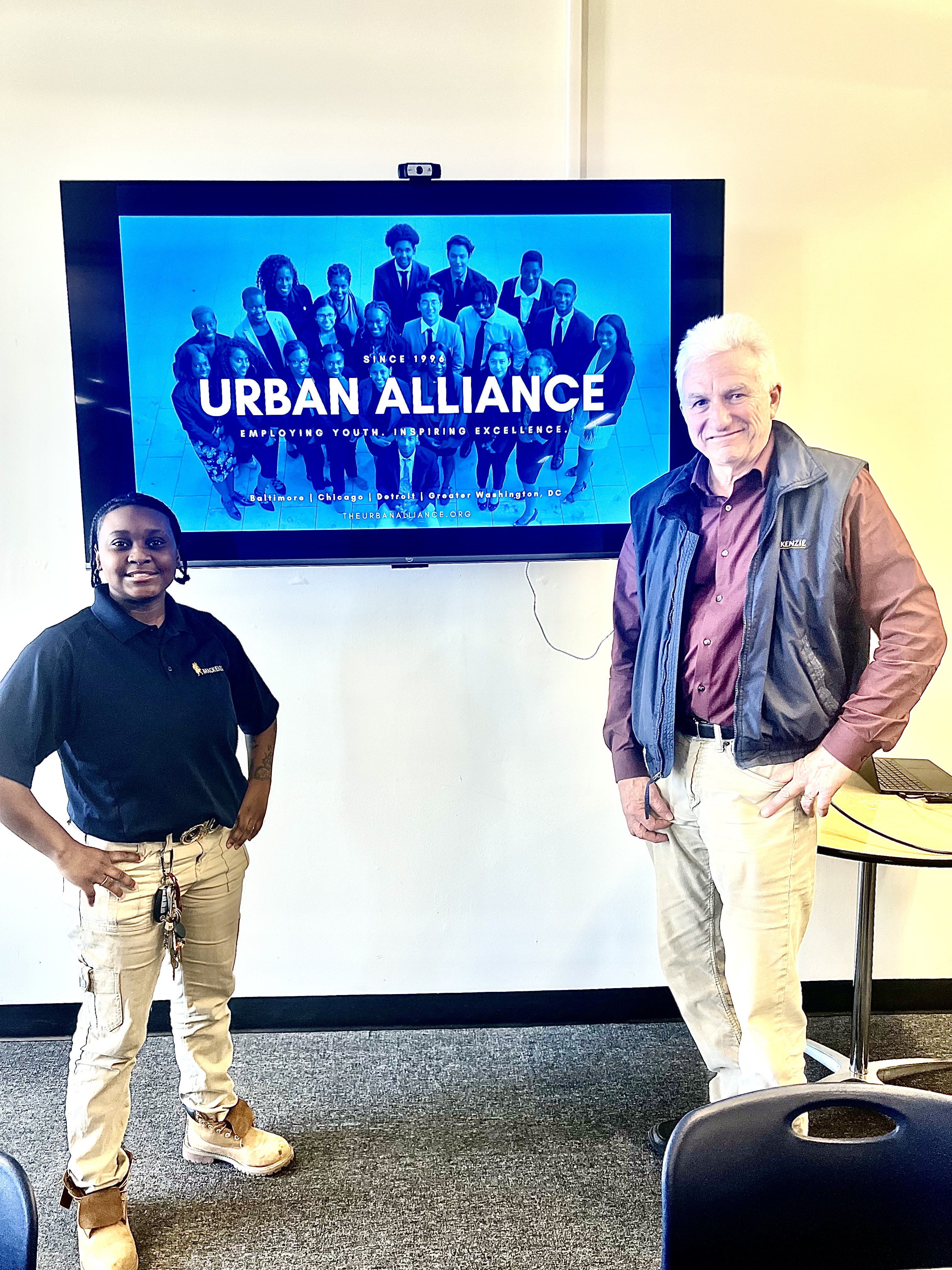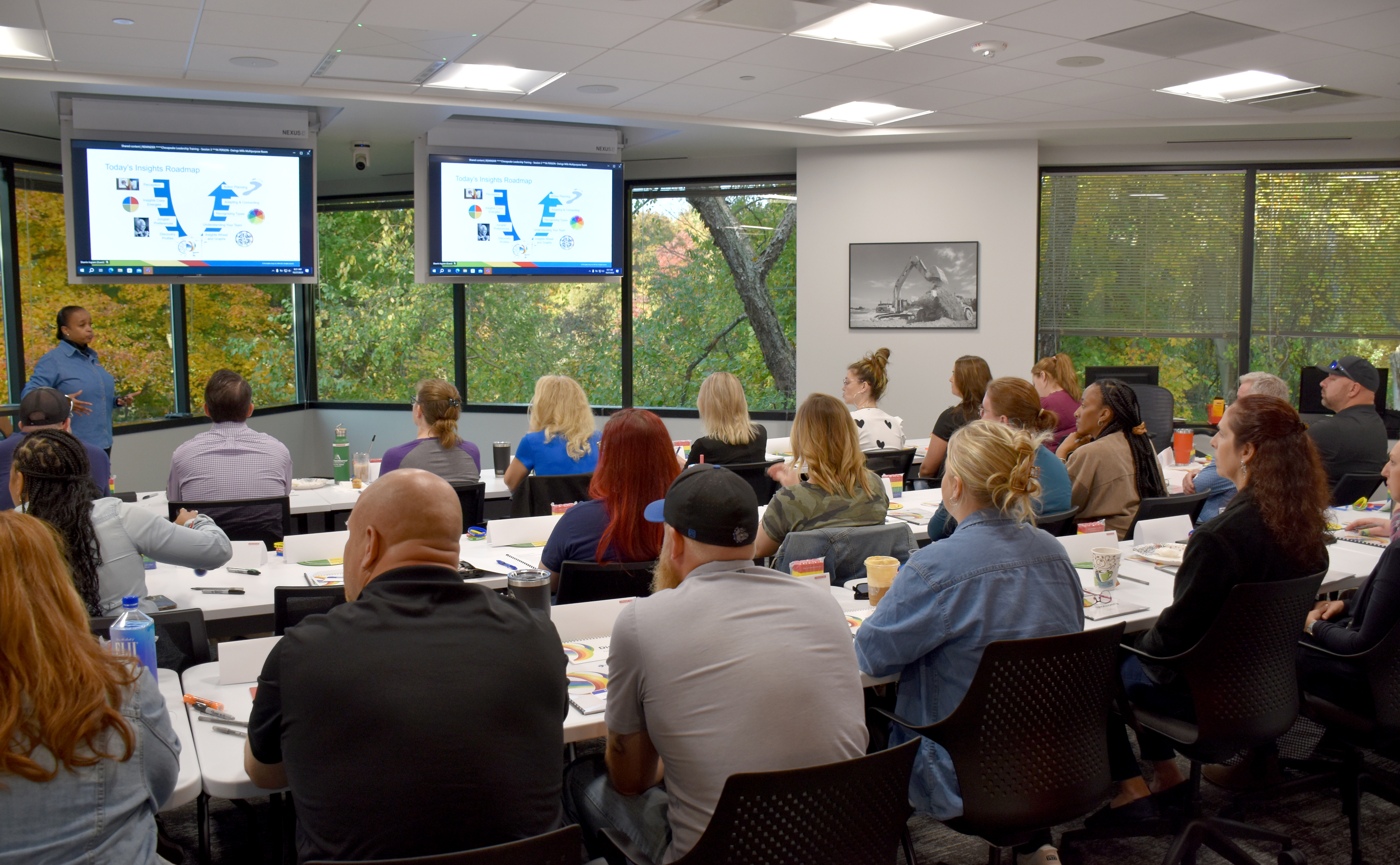An unexpected call from Ed St. John saddled Tom Pilon with a talent-development challenge. It was a Thursday afternoon in spring 2020. St. John announced that he had hired an intern for Pilon and the young man would be starting work come Monday morning.

Katrina Trintis, a St. John Properties’ Engineering Intern, participates in a shadow day with McCrone Engineering. Photo courtesy of St. John Properties.
“Ed said that James was studying engineering at Virginia Tech and, ‘He wants to learn about civil engineering, so I told him you would teach him everything about civil engineering,’” recalled Pilon, Executive Vice President of Development. “I am, in fact, a civil engineer but we don’t do any engineering work in-house at St. John Properties.”
In the ensuing effort to find meaningful work for the intern, Pilon arranged for the student to participate in “shadow days” at several companies St. John Properties worked with, including four civil engineering firms.
“That planted a seed that maybe we could create some kind of program and have more than one intern,” Pilon said.
By 2021, St. John Properties, which still doesn’t do engineering in-house, formally launched a non-conventional, four-year, paid Engineering Internship Program (EIP). It is one of a growing number of in-house and community-based talent-development programs that NAIOP-MD members participate in. Some are designed to foster a company’s own talent pipeline. Some aim broadly to grow talent for the CRE, engineering, architecture and construction industries. All acknowledge that companies need to play bigger roles in talent development to ensure their industries thrive.
To create its EIP, St. John Properties enlisted the participation of more than 15 partner companies, including firms specializing in architecture, transportation, land-use law and planning, environmental issues and multiple engineering disciplines.

Makayla Jones (left) learned the fundamentals of building management through an internship with MacKenzie Commercial Real Estate and Mike Columbus. Photo courtesy of MacKenzie Commercial Real Estate.
Interns, who are hired directly out of high school and before they begin an engineering program in college, spend their first summer doing shadow days with various firms, attending lunch-and-learn sessions about CRE development, learning CAD and completing a research project. The second summer places students in a series of mini-internships relating to the focus of their engineering studies. The third and fourth summers provide more traditional internships with engineering companies.
The goal of the program is to provide interns with deeper understanding of and real world experience with various engineering disciplines, but not to generate staff for St. John Properties.
“If they came back and worked at St. John, I would be a little disappointed,” Pilon said. “What we are really trying to do here is give back to the profession.”
And that is already happening. Some students who interviewed for but didn’t receive a St. John Properties internship, have been hired by partner engineering firms.
“It is having a multiplier effect, which was an unexpected bonus,” Pilon said. “It makes you feel like we have put something good together because other people are seeing value in it… We also designed this program with the idea that it is repeatable so if somebody wanted to take this program and do it at their company, we would be completely happy with that result.”
In the last two years, Chesapeake Contracting Group has developed two major training programs for its staff.
Its two-year engineering program puts new hires (typically recent graduates from engineering or construction management degree programs) through a series of rotations focused on estimating, field operations and project management.
Its custom-designed, nine-month leadership program guides existing and emerging leaders in the company through bi-weekly training sessions and homework assignments in order to develop an array of skills.
The leadership program “is tailored to cover a lot of concepts that are not typically taught in college or in a lot of other companies: self-awareness, emotional intelligence, accountability, radical candor, building trust, active listening, healthy conflict,” said Jessie Magin, Human Resources Director.
Combined, the two programs have aided Chesapeake’s talent attraction, retention and development efforts, Magin said. They have also helped the company create a work culture that is more pleasing (especially to younger workers), improved communication and collaboration with clients and subcontractors, and generated valuable ideas for improving Chesapeake’s operations.

Chesapeake Contracting Group created a customized leadership training program (below) for all its existing or emerging leaders. Photo courtesy of Chesapeake Contracting Group.
Meanwhile, MacKenzie Commercial Real Estate has boosted its talent attraction and development efforts by participating in the Urban Alliance Baltimore’s Property Management Internship Program. The Urban Alliance selects new high school graduates who might be interested in that career path, gives them some preliminary training on how to operate in the work world, then provides them with a four- to five-month paid internship at a participating company.
Mike Columbus, Vice President of Operations at MacKenzie Services Company, assigns his interns to an experienced building engineer who is “a natural born teacher.”
“The interns learn some carpentry, plumbing, light electrical work,” Columbus said. “They learn to fill out work orders, use the computer system, and how to act professionally when they are dealing with our tenants. I also bring the interns in periodically to do some electrical studies or HVAC studies.”
To date, MacKenzie has hired two interns as permanent building engineers and would have hired a third “but another company hired them away from us,” Columbus said.
The internship program, he notes, fills a gap in the development of building management personnel.
“When companies hire maintenance technicians, they typically want someone with three to five years of experience. But how do you get that experience?” he said. “Unless you find somebody who needs a helper and is willing to take you on, it’s hard to get your foot in the door. So, this program is a great opportunity to get that experience and start learning a trade.”